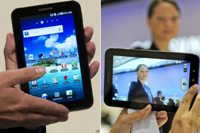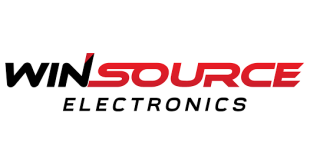
This year alone, shipments will surge 28 percent to 1.7 billion units, with strong double-digit growth projected for the next two years before the rate of expansion slows slightly in 2015.
“The expansion in touch controller IC shipments is due to the growing number of devices that employ touch technology,” said Randy Lawson, principal analyst for display & consumer electronics at IHS. “Apple almost single-handedly ignited the market for touch in 2007 when it introduced the iPhone, which featured a multi-touch screen based on a projected capacitive touch technology. Since the appearance of the iPhone, many other smartphone manufacturers have jumped on the bandwagon by deploying sophisticated touch sensors for their products.”
Moreover, touch technology has branched out from being used mainly in mobile handsets to a wide array of consumer electronic items, expanding the aggregate universe of touch applications. Touch sensors now can be found in tablets, e-readers, all-in one PCs, portable media players, portable navigation devices, flat-panel TVs and monitors, handheld video game players, automotive applications, digital still cameras and digital picture frames. Together, the number of devices and appliances using some form of touch controller IC is predicted to hit 1.06 billion units this year, nearly double from 514.9 million units only two years ago.
Shipments of touch controller ICs exceed those of touch-screen-equipped mobile devices due to the use often of more than one IC in each product especially in tablets, and also because of the relatively low manufacturing yield frequently seen in advanced touch screen modules.
Projected capacitive touch screens like those first featured by Apple in its products made up 54 percent of the touch market in 2011. They also will remain the dominant implementation for the space in the years to come, ahead of other touch-sensor technologies like infrared, optical, resistive and surface acoustic wave.
The leaders of the touch controller space in 2011 were Atmel, Cypress Semiconductor and Synaptics, which together held more than 60 percent share of the market in revenue. Even so, competition abounds in this fast-growing industry, mainly from the Asian suppliers of display driver ICs such as Novatek Microelectronics and Himax Technologies of Taiwan, as well as Hong Kong-based Solomon Systech International. Many Asian suppliers are developing their own touch IC solutions, hoping to eventually integrate touch functionality into existing single-chip driver ICs used in both mobile handsets and small liquid crystal displays smaller than 5 inches for the general mobile consumer electronics market.
But while unit shipments of discrete touch controller ICs will continue to grow this year and beyond, revenue growth is expected to be more limited, IHS believes. Touch controller IC revenue this year will reach an estimated $1.5 billion, up 15 percent from $1.3 billion in 2011, a much lower rate of growth compared to the touch IC shipments. And in contrast to the continuing shipment growth in the years to come, touch IC revenue will peak in 2014 at $1.6 billion before starting to decline the year after.
The less robust revenue picture is due to several factors, including a decline in average selling prices, the falling number of touch ICs being employed per panel in medium-sized applications, and the increasing market pressure from integrated solutions like those offered by the Asian IC firms. ASPs are expected to drop by approximately 12 percent every year through 2015. Meanwhile, the number of touch controller ICs used in tablets larger than 7 inches will decline from three or more to only one in many cases.
The integration of touch functionality into the chip-on-glass mounted display driver IC also will present a challenge for touch MCU suppliers in the near future, though the impact of that design approach will be less significant from 2012 to 2015 than the other revenue-dampening effects on the space.
Mobile devices, especially smartphones and media tablets, will continue to lead the consumption of touch solutions and touch-related ICs. Both applications will account for a combined 61 percent of the touch controller market in 2011, and then go on to comprise more than 71 percent of the total touch IC market by 2015.
 CIE Components in Electronics
CIE Components in Electronics



